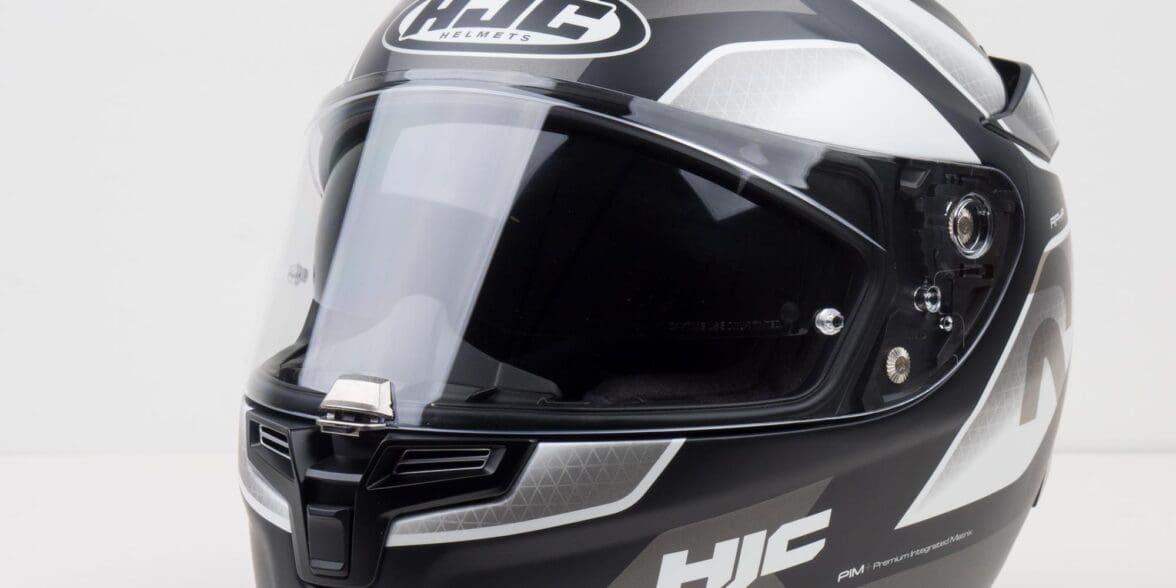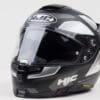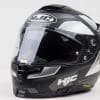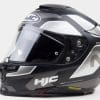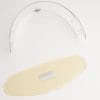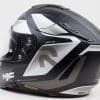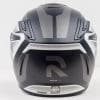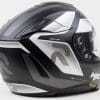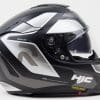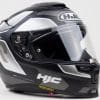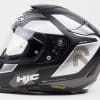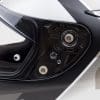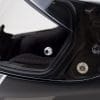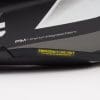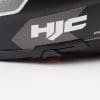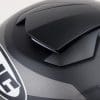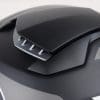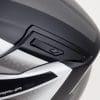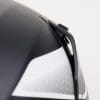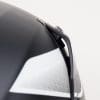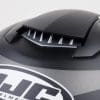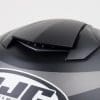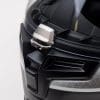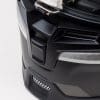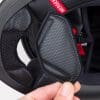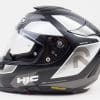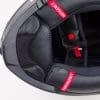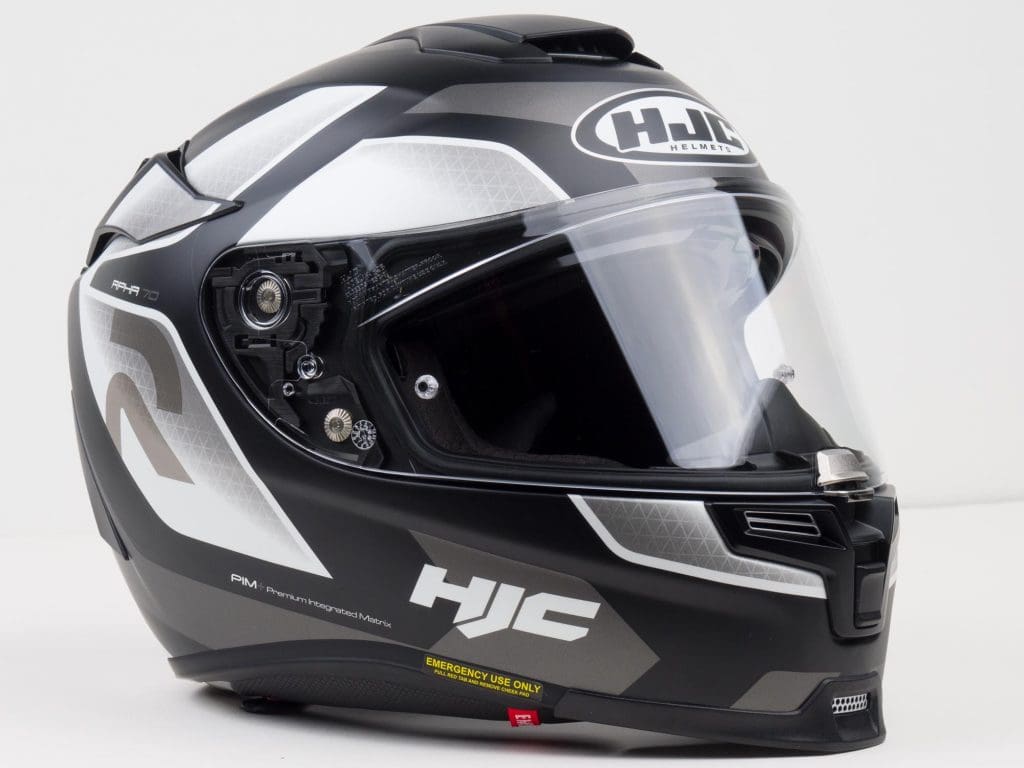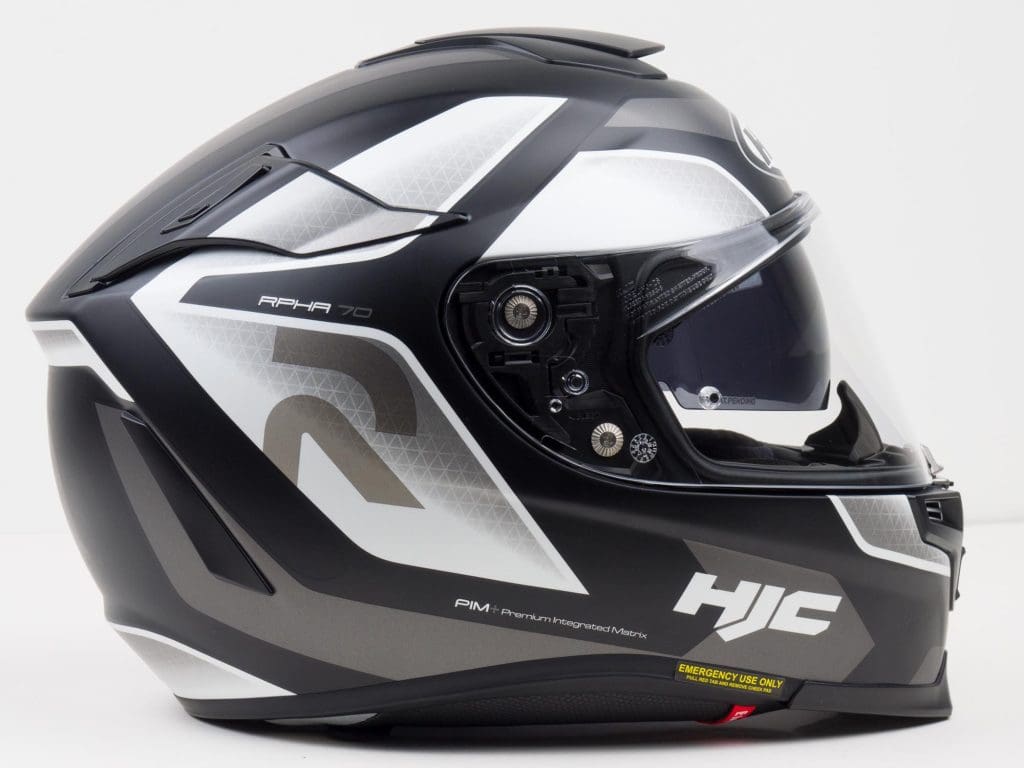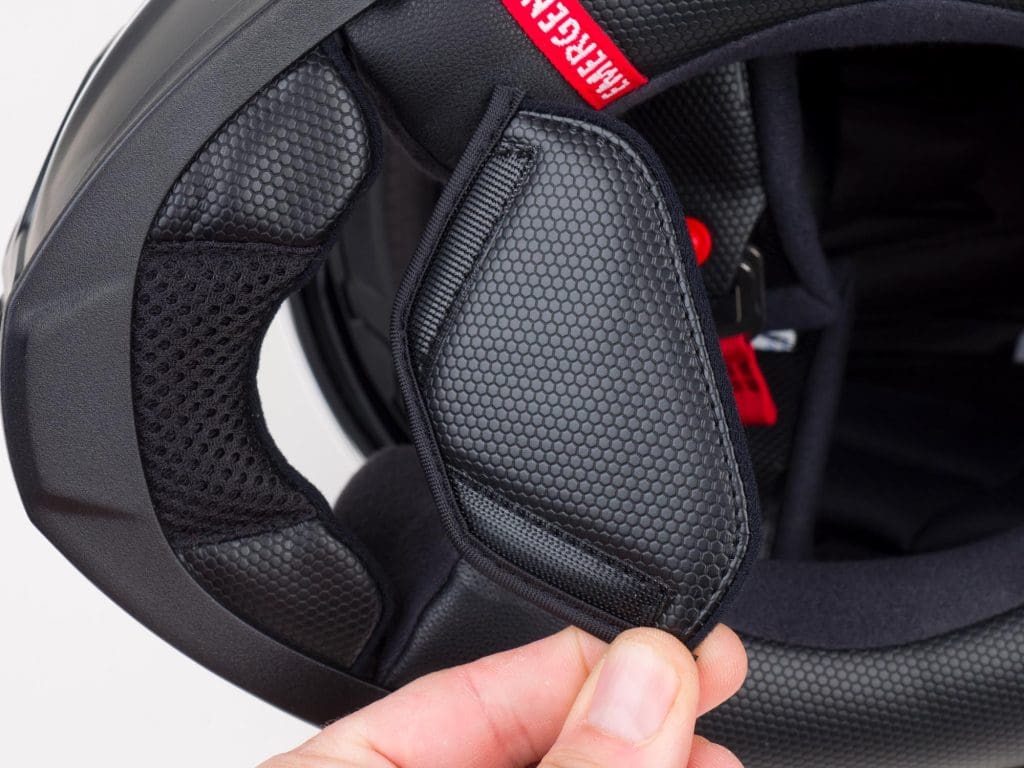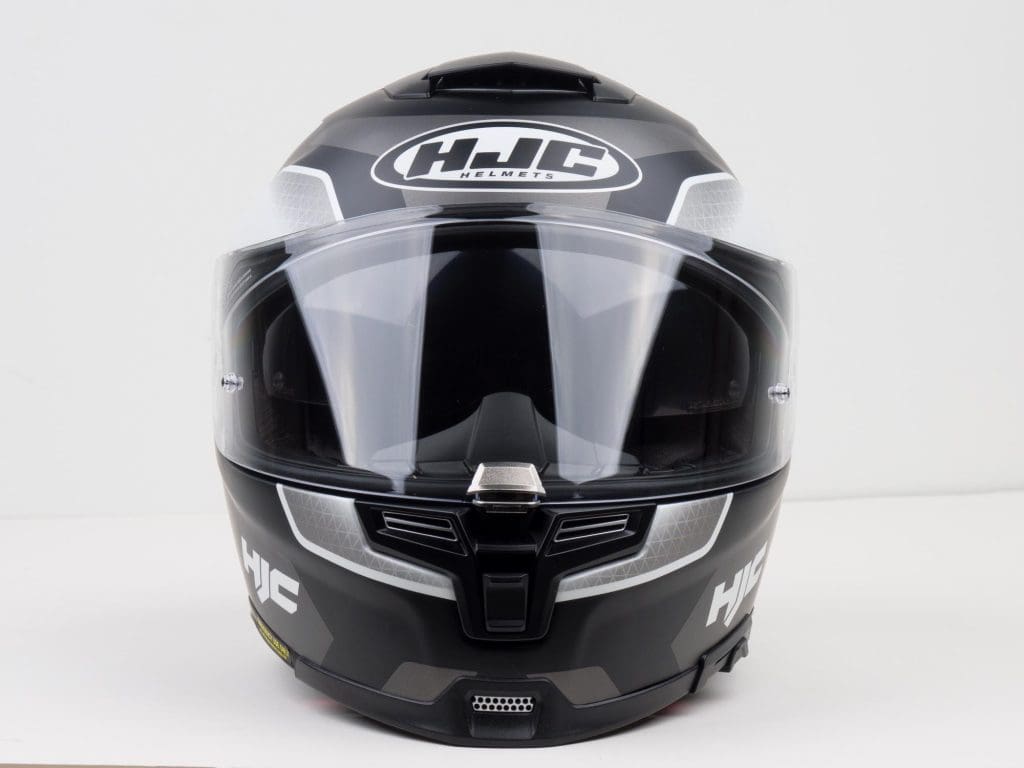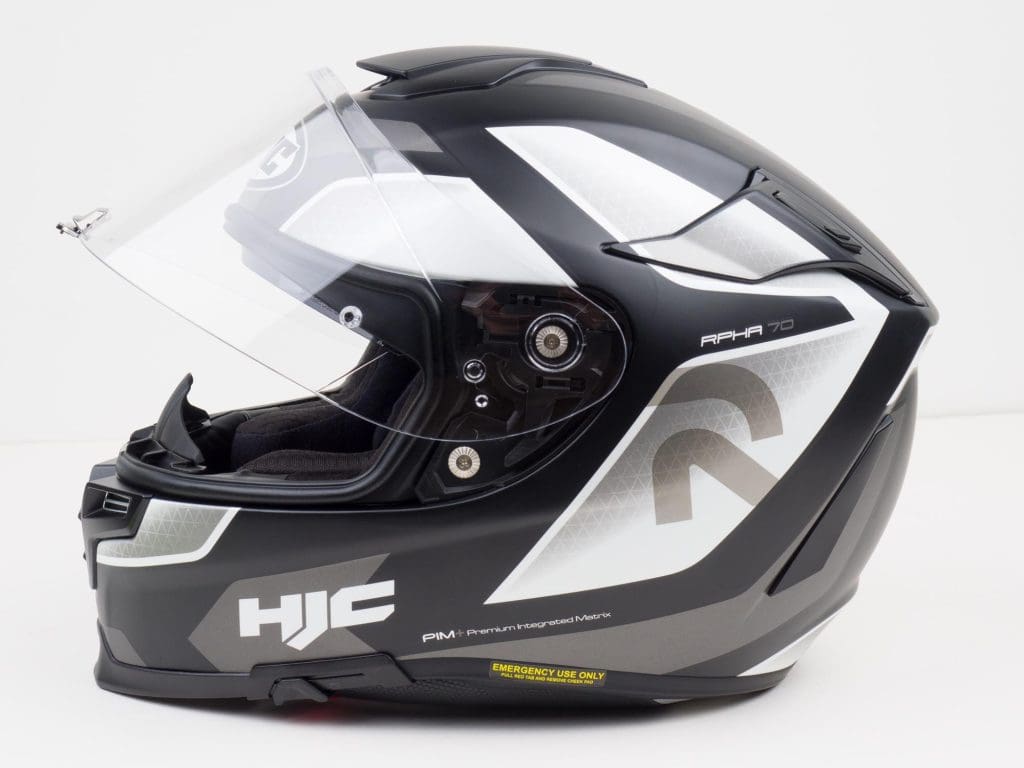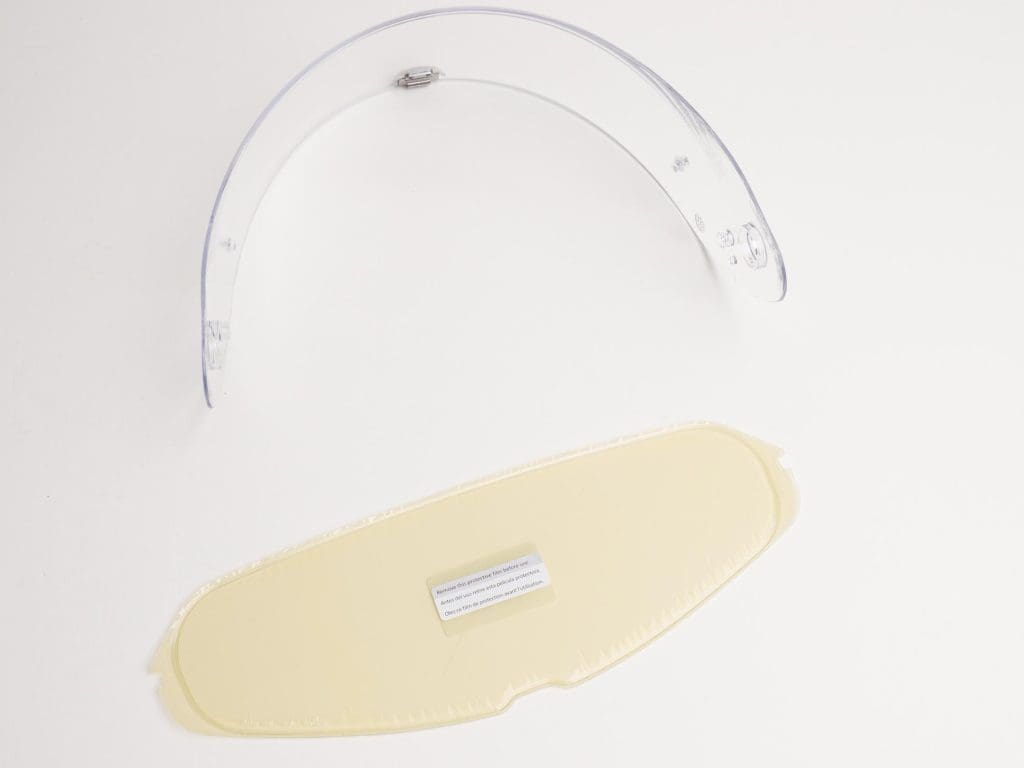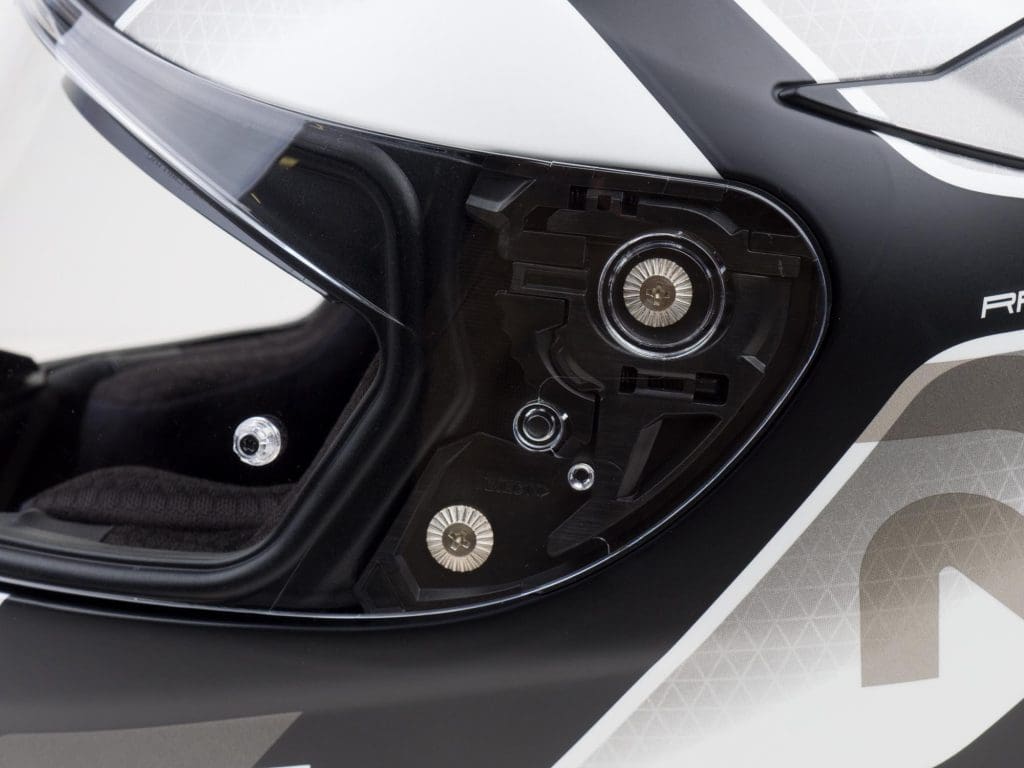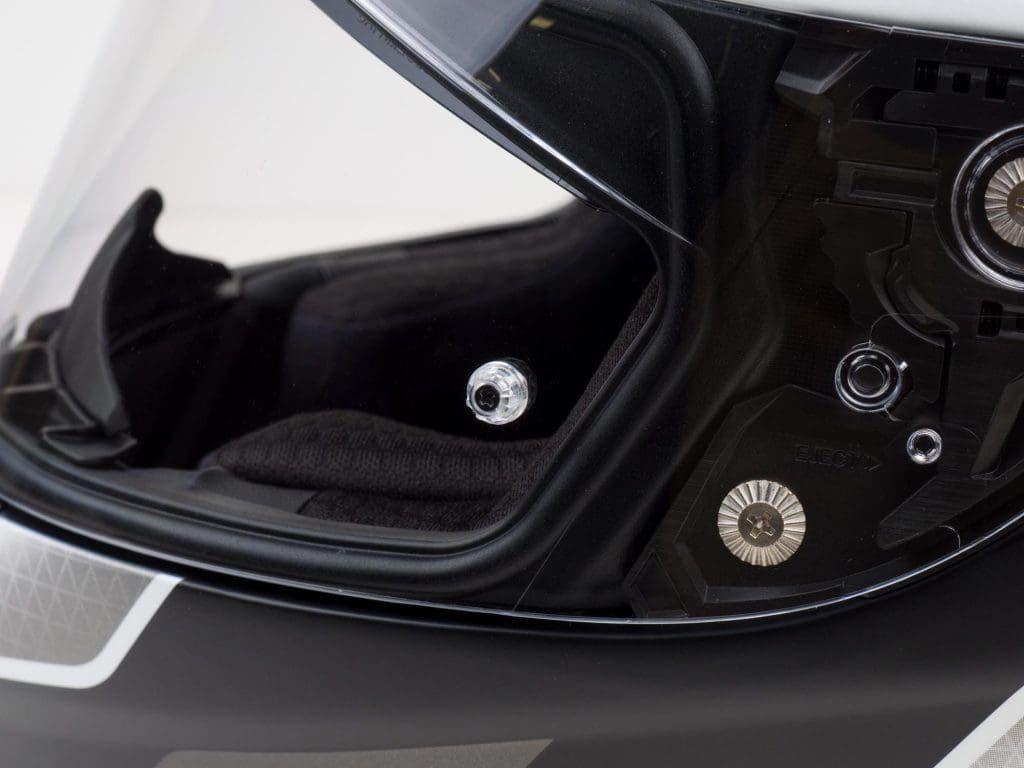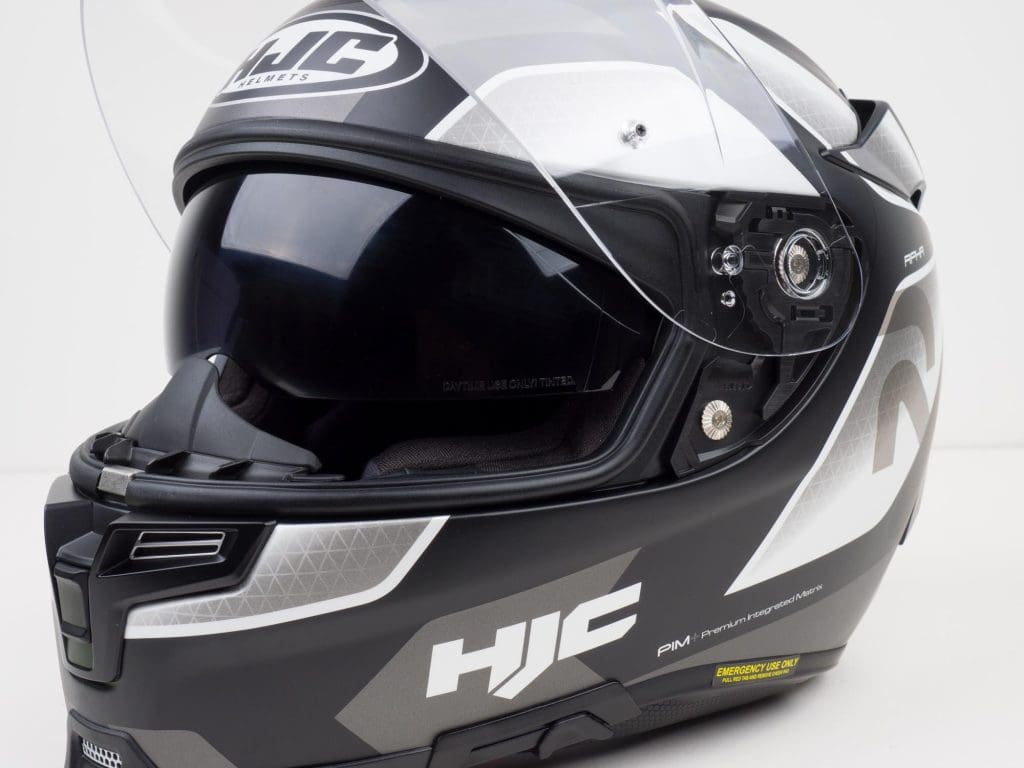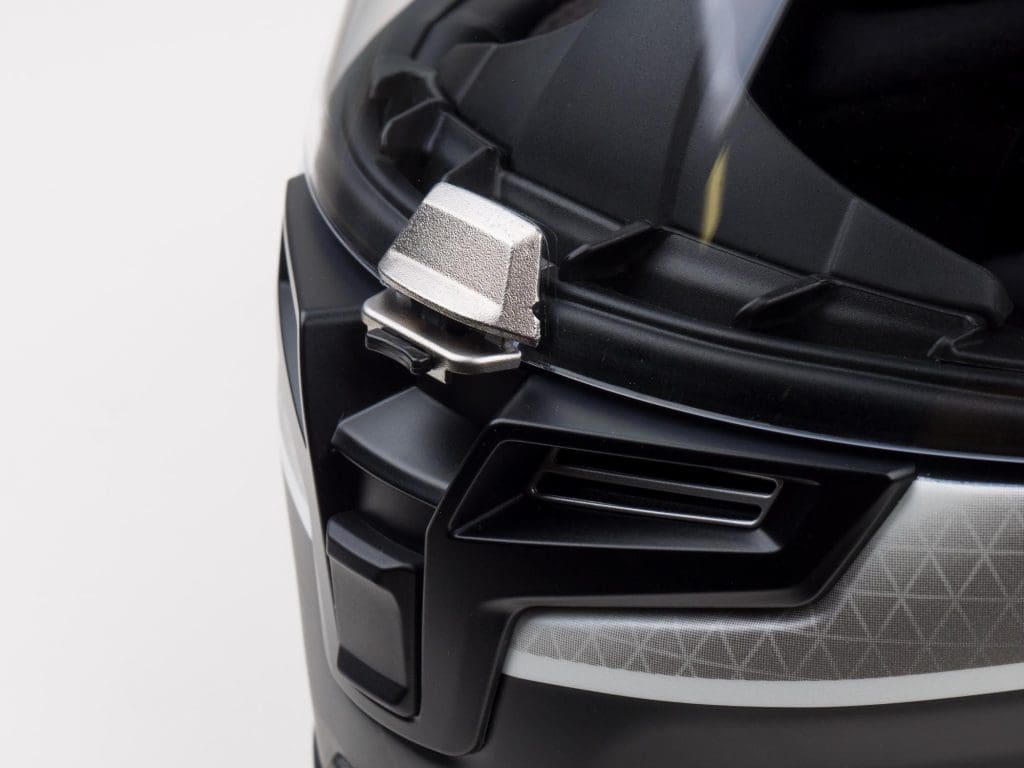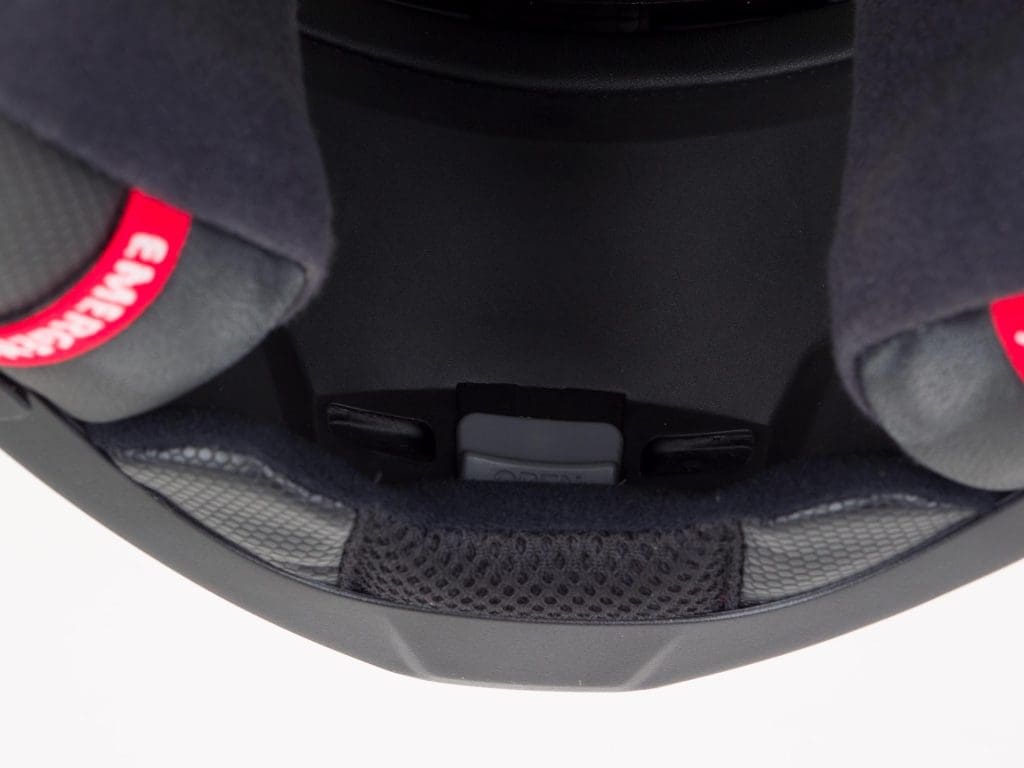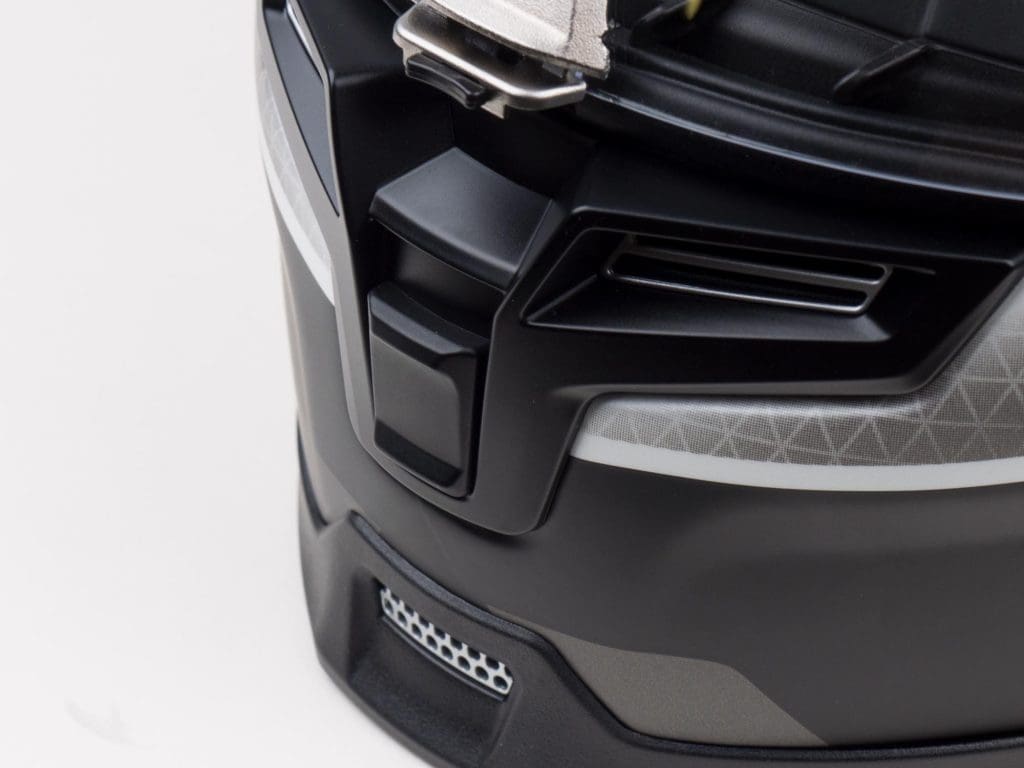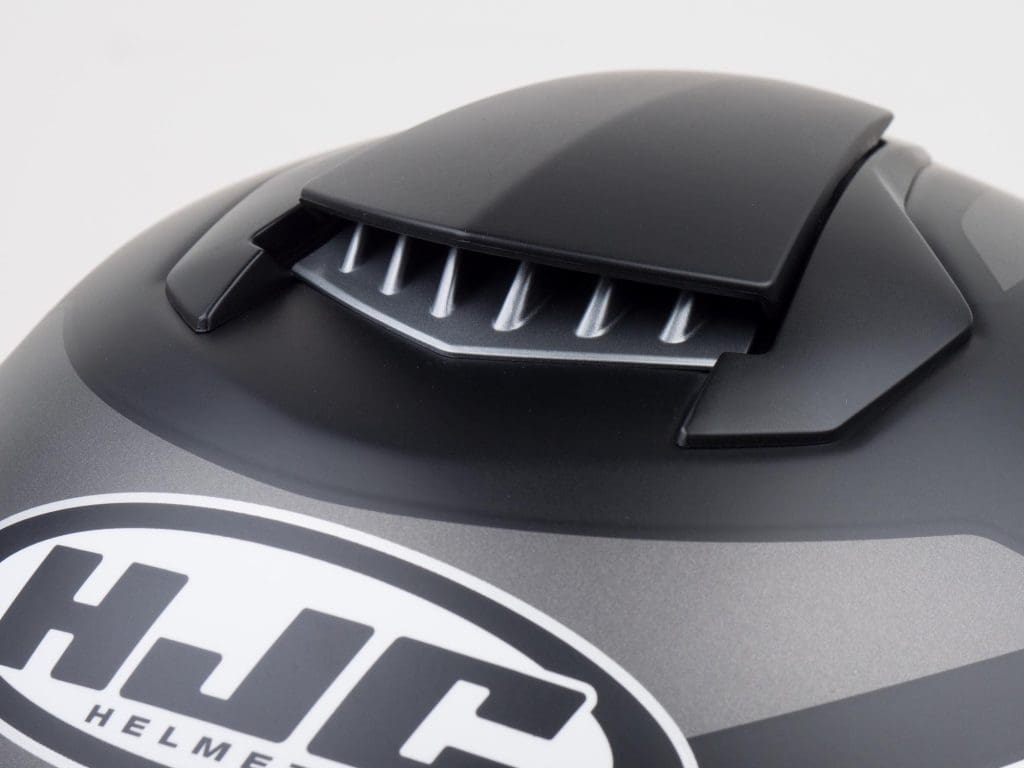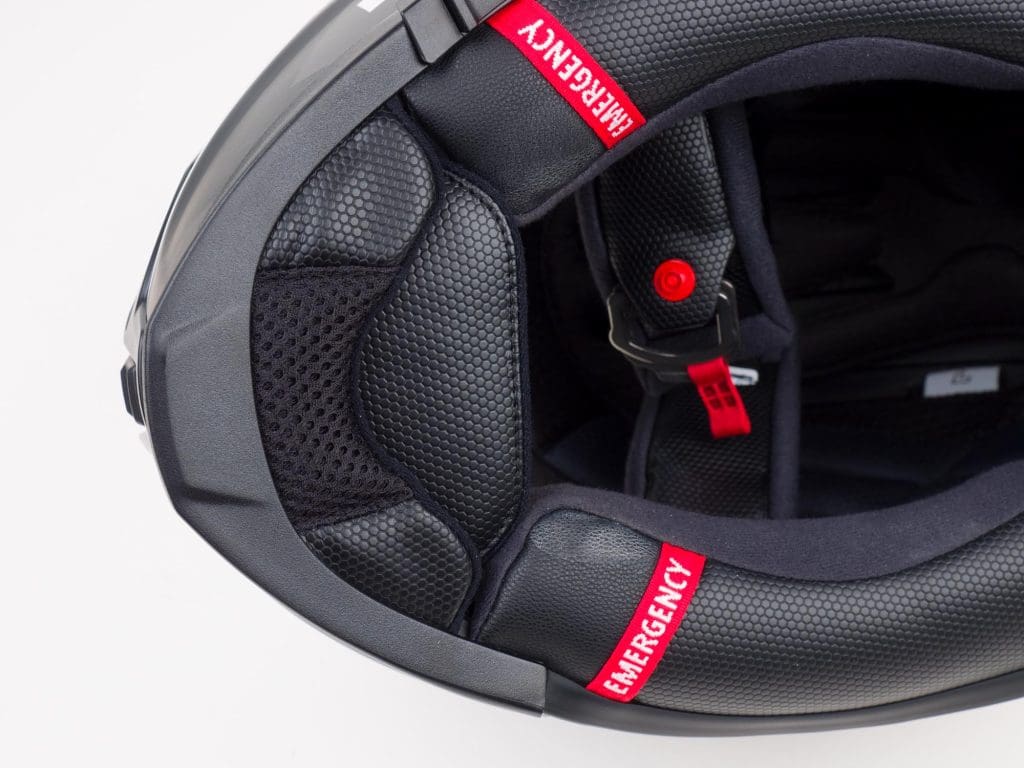The RPHA 70 ST represents HJC’s top shelf sport-touring helmet and is an evolution of the original RPHA ST. Features such as a lightweight and rigid shell, an internal sun visor, and included pinlock ready visor and insert are just the beginning of the features packed into the RPHA 70 ST.
Introduction
If there were an official “household” name in motorcycle helmets, HJC could likely be that name, especially here in the in the United States.
HJC has been the number one selling motorcycle helmet brand in the States since 1992 and has achieved this by offering a balance of good quality and reasonable price. As such, HJC has not been the most expensive or inexpensive choice around and has excelled at dominating the mid-range market.
My first motorcycle helmet was an HJC full-face model in 1993. I don’t recall much about it except it was black, full-face, and it did the job. I believe it was right around the $100.00 mark which fit well in my meager budget at the time.
Since that first helmet I’ve had some other helmets from HJC but haven’t owned one in the past few years. When HJC provided a RPHA 70 ST for review, I jumped at the chance to check it out and see their latest and greatest.
RPHA 70 ST Overview
At first glance, the RPHA 70 ST is a busy design. There are numerous vents, a slider at the lower edge of the left side for the sunshade, and a visor locking mechanism front and center.
That’s not to say it’s an unattractive helmet. The unit I have for review looks great in black/white/grey Grandal graphic and the pattern works well with the various hardware located on the shell.
The main visor uses HJC’s RapidFire II shield replacement mechanism and it one of the easiest I’ve used. The visor is prepped for a Pinlock “like” insert and HJC includes a clear insert in the box. The included insert comes in an HJC package labeled “Skipfog” which appears identical to a Pinlock insert. More on that a little later.
Being a sport touring helmet (hence the ST label) the RPHA 70 ST includes features like an internal retractable sunshade, a chin curtain with an extender, and provisions for intercom systems.
Looking at the underside we have a double D-Ring closure strap and textured vinyl lining the bottom of the neck roll and cheek pads. One feature that really stands out are the red “Emergency” pulls for safe helmet removal in case of an accident.
With the high-level view behind us, let’s dig into the details.
Paint, Graphics, And Overall Quality
The Grandal graphic is a nice looking pattern that works well with the overall shape of the helmet. The graphics and the HJC logo decals are very smooth and the semi-flat finish is free from defects that I could see.
I prefer high gloss finishes on helmets but this finish is a nice balance between gloss and full flat matte finish available on other helmets. The smooth surface has a sheen to it rather than being completely dull and it seems to resist fingerprints well.
Operation of the various vent closures is solid and positive. Smoothness of operation seems to vary a bit from vent to vent but none of them reach the “high” quality feel I would associate with other premium range helmets. They are certainly not bad, but I’ve experienced better.
Likewise, the sunshade slider isn’t the smoothest in action. It feels perfectly solid and seems like it will last, but moving it from one end of it’s travel to other it doesn’t exactly “glide”.
The cheek pads have a nice soft feel. While not “plush” they are very comfortable. The underside of the cheek pads are covered with a textured vinyl designed to be grippy for staying put on motorcycle seats.
Helmet Fit and Internal Shape
Fit for the size large reviewed here is right what I expected, however, it is important to note that HJC’s size chart recommends size large for 58-59cm heads. This is a little smaller than the typical 59-60cm range many other manufacturers indicate for size large.
HJC uses three shell sizes for the RPHA 70ST with XS/S using the smallest shell, M and L using the middle shell, and XL/2XL using the largest shell.
As expected the size large is more snug than other large helmets I’ve had. Snug, but not painful. I actually prefer the snug fit and now that it has broken in it feels great and still fits secure.
Just keep in mind if one is normally towards the upper range of the typical large helmet, the next size up might be appropriate. I always recommend getting a helmet on your head if you can before purchasing or at least buy from a seller that allows for easy exchanges.
The shape feels just slightly to the narrow side of “neutral” so I’d characterize it has intermediate oval ”-ish”. If it were any more towards the rounds shape my chin could probably touch the chin bar without much effort. In this helmet I can barely touch the chin bar if I really stick my chin out.
Eyeglass wearers should have little to no issues fitting most frames comfortably inside the RPHA 70 ST. I found wireframes and plastic frames all fit without issue for me. Of course everyone’s head shape and size is different so one should bear that in mind.
The liner and cheek pads are very comfortable with a lot of open air space in the upper lining area. The surface material of the upper liner has a little texture to it and is not as soft as the cheekpad surface.
The cheekpads are covered in a moisture wicking “Multicool” fabric that is also anti-microbial. It’s a soft material with a nicer feel than other helmets in this price range.
Both liners and cheek pads are removable for cleaning and they can also be swapped out for other size options to customize the fit. The cheek pads are interchangeable between all shell sizes. For the upper liner, HJC provides a table to determine what sizes can be swapped between different size shells.
Eye Port And Visibility
The eyeport opening on the RPHA 70 ST is fairly standard with a bit of extra height than what I would consider average and average side to side view. Having had a Shark Vision R GT helmet in the past I can say that super tall eyeports aren’t necessarily ideal, especially during morning and afternoon times when riding towards the sun.
An extra bit of additional downward view can be had by removing the included nose/breath guard. These are getting to be common on full face helmets now but I’m not a fan. I have yet to notice much difference in fogging with or without them.
Face Shield
The main visor is optically very good with very little distortion visible through the clear polycarbonate. The material is about 2.8mm thick (measured at the top center of the visor) which is slightly above average but is still has some flex to it.
Since the visor uses a centrally located visor lift tab/lock flex isn’t really an issue when opening. It will twist pretty easily if one tries to flex it once it is open, but in real world usage it isn’t an issue.
Speaking of the lift tab / locking mechanism, HJC uses a spring-loaded squeeze-clip arrangement attached to the edge of the visor. It is very effective but it seems a bit cumbersome for doing what it does.
I both like and dislike the setup. On the plus side, I like the locking feature as it easy to engage by just closing the lid down until it “clicks”. I like this better than other helmets that use a separate lever located to the side. I also prefer the central location for lift tabs as it reduces flex of the visor and can be reached with left or right hands.
The downside in this case is that HJC has created a bit of a pocket in the upper chin bar around the clip to presumably keep it from accidental opening. At the same time it can make it a little difficult to get a thickly gloved finger into this area to release it. Vemar implemented a simple and effective locking mechanism on their recent Zephir helmet which seems more elegant a solution to me.
Regardless of what one thinks of the closure setup, popping up the visor lock leaves the visor open just 2-3mm which is great for letting a small amount of extra airflow in for de-misting or just extra airflow when it is hot.
There are a total of six positions into which the visor can be placed with the uppermost taking more effort reach. The top position is also where one positions the visor for removal.
HJC includes a “SkipFog” insert that attaches to the inside of the main visor to prevent fogging. This insert is similar (if not identical) to a Pinlock insert not only in form but also in the way it is installed.
Pinlock also offers a replacement insert to fit the HJ26 visor used on the RPHA 70 ST and 11 Pro. I’m not sure exactly what is up with this but the SkipFog included seems to work just as well as Pinlock inserts I’ve had in other helmets
The only concern I have is that the SkipFog lower edge seems to contact the upper edge of the visor locking mechanism. The edge of the insert seems to ride up a little here instead of being perfectly flush against the visor. I’m not sure if this would the same with the Pinlock branded option.
Face Shield Removal
HJC has a real winner with the removal procedure on the RPHA 70 ST and the HJ-26 visor. To remove the visor, simply open to the top position and pull back the release lever on the side pods. The visor will pop right out of the pivot point with ease.
Replacement is equally easy and only requires placing the visor at the right position and pressing it into the pivot. It will snap into place solidly on each side. It really is quick, easy, and simple.
Eyeport Gasket
Locking the visor into place creates a tight seal against the gasket around the eyeport opening. I tested the visor seal by running water over the brow of the helmet and even running it directly at the visor edge. No water leaked through in this static test and I doubt it would be an issue even on the road. It is sealed tight.
Internal Sun Visor
A drop down internal sun visor is integrated into the RPHA 70 ST which can be raised and lowered via a sliding actuator on the lower left side of the shell. Sitting around the ten o’clock position, sliding the lever towards the rear drops the shade down. Sliding it forward raises it and also has a strong detent at the end of travel to lock it into the raised position.
Like many other internal sun shades I’ve tested, I would have liked to see it be a little darker but it is still effective and removes the need to wear sunglasses or carry an extra dark visor in most cases.
It comes down pretty far, but like the darkness of the tint, I would have liked just a bit more. This isn’t a call out against HJC as this is typical of these visors across brands and the visor here is still better than most.
Optically it is good, but not quite as low distortion as the main visor. A bit of distortion can be seen to the left and right of center with the visor but it isn’t strong. After a few minutes of riding it isn’t apparent much anymore.
Ventilation
The RPHA 70 ST has no shortage of vents. At the bottom of the chinbar is a small screened opening that vents directly through the bar onto the chin area. The air comes in the from the front opening and empties into two separate channels that are opened and closed via a sliding switch on the inside.
Reaching this switch can be a bit tight if one has the extra chin curtain piece installed but I haven’t seen much need to use the switch much other than testing. Air flow here is hard to discern as it is so close to the bottom edge it’s hard to tell what air comes from the vent and air coming from under the bar.
Above this is a sliding switch on the outside of the chinbar that opens two channels on either side of the switch under the visor. These open up to large ports that channel air directly at the main visor.
The switch has raised sections at the bottom and top of the switch making it easy for gloved fingers to get a grip. Air flow through this vent is excellent and can be easily felt when opened. Having the drop down visor lowered blocks some of the airflow but it can still be felt.
The large top vent opens by sliding the entire vent cover toward the rear in two positions. The surface is very smooth with the front edge being the best place to push back on the cover. Once opened the rear edge is exposed to make it easy to catch for closing.
Like the larger chin vent, the top vent flows a lot of air. I can actually feel significant air flowing along the top of my head with the vent open. Of course the cold weather lately has me keeping the vent closed, but it also makes it easy to tell how effective the vent is.
The two top rear vents sit high on back and are under two small spoilers to which a rocker switch is located to open and close them. These two vents open directly through channels in the EPS material inside. Airflow isn’t as pronounced as the larger forward facing vent but it does make a small increase in airflow when open in conjunction with the large top vent.
Finally there are two always open rear exhaust vents are nested under vertical plastic covers. The covers sit vertically and are about 3 inches (76.2mm) but the vent hole is only about ¼ inch (6.3mm). The vent holes do have a straight path through to the interior through the EPS.
Overall the airflow is outstanding and is one of the best I’ve experienced.
Noise Levels
Considering the various vents and the spoilers I expected the RPHA 70 ST to be a noisy helmet. In fact, the opposite is the result with lower than average wind rushing noise and very little low frequency booming.
A small chin curtain is pre-installed and does not appear to be (easily) removable but at only 1 inch (24mm) wide it isn’t that significant. An additional panel is included that attaches via hook and loop fastener on the inside of the curtain to extend it another 1.5 inches (38mm) to reduce airflow coming up from under the chinbar.
Opening the vents creates a bit more rushing noise but it is very well controlled. No whistling was audible no matter how I positioned my head. Raising and lowering my windscreen had little effect as well.
While not the quietest helmet I have tested, it is definitely near the top of the list in this area.
It is important to note that I always wear custom fitted earplugs when riding and one should always protect your hearing when riding a motorcycle. See the wBW Earplug Reviews page for more information on choosing and wearing earplugs. Note also that perceived noise levels will vary, depending on the individual.
Noise can be caused by many factors, including helmet fit, the type of motorcycle and windscreen, wind speed and direction and even the rider’s clothing.
Helmet Weight and Feel
Despite the internal visor, pinlock, and multiple mechanisms for vent closure, the RPHA 70 ST comes in at only 1538 grams (3.39 lbs) in size large reviewed here. This places it in the top 50 for light weight out of the 250 plus helmets we’ve reviewed at webBikeWorld.
Weight isn’t the only factor in overall comfort. It “feels” small and since size medium and large units share the same shell size the compact feel is not surprising.
The shell seems to cut a very clean path through the air with virtually no pulling or lifting at highway speeds. Windscreen or not it seems to work well either way. Head checks are also drama free and the helmet is very stable at speed.
Intercom and Speaker Fit
HJC has partnered with Cardo Systems to create the SMARTH intercom system designed to fit many HJC helmets including the RPHA 70 ST. As such there is space in the EPS liner for speakers.
The speaker pockets have two pieces of lined pads in place. One is more or less permanently attached to the interior while another is stacked on top of it and attached with hook and loop fastener. This extra pad helps maintain quiet inside when not installing speakers.
When the top pad is not in place, one can install an intercom system speaker attaching it using the hook and loop service. I would say that all but the largest helmet speakers should fit in this space.
In my case I had to make a modification to install my Sena 3S system. The 3S places the battery and most of the electronics within the speaker housings making them thicker than most others. The trade-off is a very compact control surface that can be mounted on the outside of the helmet shell and has a very small profile.
To mount my 3S system, I had to remove the second pad that is sewn to the helmet in order to have enough room to comfortably mount the speakers in the helmet. Most other intercom speakers are not as thick as these and will likely install with less drama.
Despite my removal of the extra padding, the helmet still remains one of the more quiet helmets I’ve reviewed.
Safety Standards and Warranty
Something I’m thrilled to see is the inclusion of “Emergency” pulls on the cheek pads. Looking at the underside of the helmet, there are two red fabric loops. These can be used by first responders to safely remove the helmet in the event of a crash without causing further trauma to the neck or head.
Pulling the red tabs will cause the cheek pads to slip out from their snap-in pins holding them in place to the EPS interior. HJC includes extra pins to replace any that are damaged in the event the system is used. This assumes the helmet remains otherwise undamaged.
The RPHA 70 ST meets both the DOT standard in the USA and the European CE 22.05 standard and comes with a 5-year warranty from the date of manufacture.
See the webBikeWorld report “ECE vs. DOT Helmet Safety Standards” for more information on the difference between DOT and Snell.
Conclusion
Pros
- Excellent ventilation
- Emergency cheekpad pulls
- Included anti fog insert
- Quieter than average
- Super quick visor removal/installation
- Reasonable price
Cons
- Lower chin vent access
- Internal visor could drop lower
HJC has certainly succeeded in offering a helmet that punches above its weight. Despite being one of the most expensive offerings from HJC, the RPHA 70 ST starts at just $399.99 MSRP (~$359.00 street price) and offers excellent quality and value in the price range.
The smoothness of some of the vent and visor controls does detract from the overall quality feel but the reality is these are pretty minor issues. The only other areas I feel could be improved are the optical quality of the internal visor, which is still very good, and ease of access to the inside chin vent slider.
Despite the above points, when stacked up against features the lightweight and rigid PIM shell, the quality of the semi-matte finish, the outstanding ventilation, and better than average noise control, I feel the RPHA 70 is top choice at the price point. It should also fair well against helmets well above the price range in which it currently resides.
- Manufacturer: HJC Helmets
- List Price (2017): $399.99-$609.99
- Made In: Korea
- Colors: Semi Flat Black | Metal Black | Semi Flat Titanium | White (plus three graphics options)
- Sizes: XS-2XL
- Review Date: January 2018


